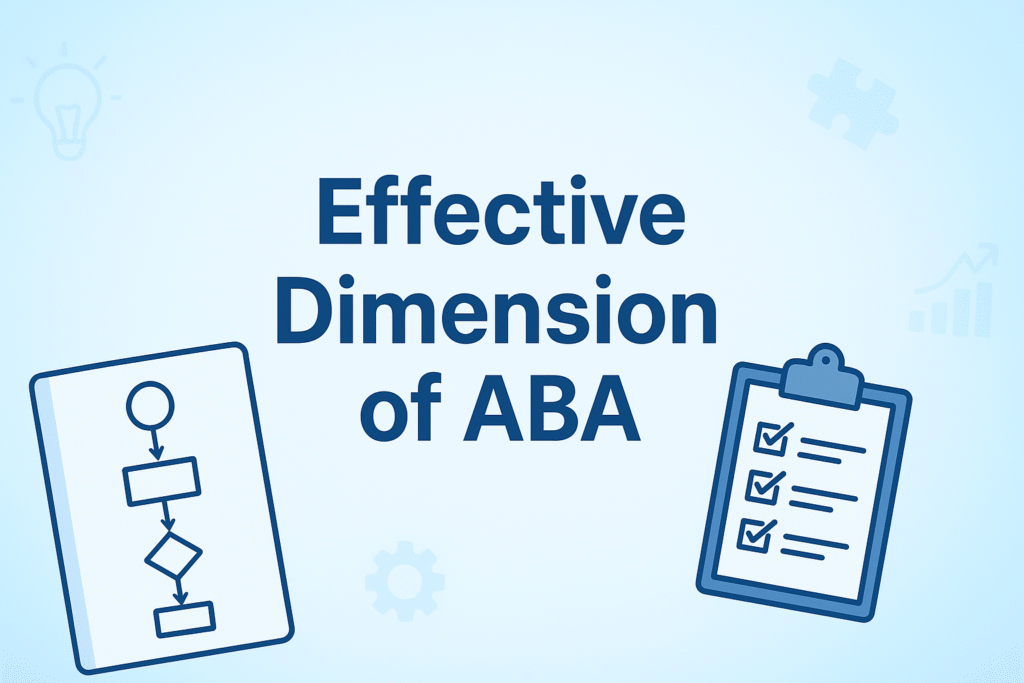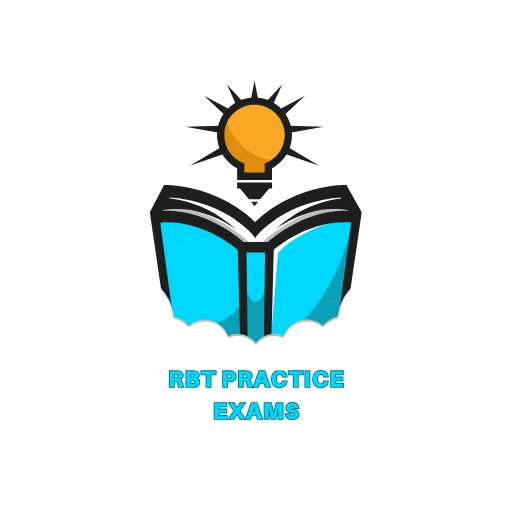Applied Behavior Analysis (ABA) is built on seven dimensions that guide how behavior change is measured, taught, and maintained. Among these, the effective dimension of ABA is a crucial standard. It ensures that interventions bring meaningful improvements in a person’s life, not just minor or temporary changes.
Table of Contents

When preparing for your RBT exam, understanding this dimension can help you connect the theory of ABA to real-world practice. Let’s break it down in simple terms, with examples you can remember for both your studies and future work.
What is the Effective Dimension of ABA?
The effective dimension of ABA refers to producing meaningful, socially significant changes in behavior. Simply put, an intervention is only considered effective if the outcomes make a real difference in the person’s life or environment.
According to Applied Behavior Analysis principles, effectiveness is measured by:
The size of the behavior change.
Whether the change impacts daily living, learning, or social skills.
How others in the individual’s life view the improvement.
For example, if a child with autism learns to independently request water instead of crying, that change is effective because it improves quality of life for both the child and caregivers.
Why “Effective” Matters in ABA Programs
The effective dimension is more than a box to tick in ABA therapy. It’s about ensuring interventions are not just scientifically sound, but also practically valuable.
Here’s why it matters:
Real-world impact: It confirms that the behavior changes are meaningful outside of a therapy session.
Family and caregiver approval: Changes must be valued by people in the learner’s life.
Sustainability: Effective interventions create lasting improvement, not temporary compliance.
Guidance for RBTs: When preparing for your rbt practice test, remember that effectiveness is about results that make a positive difference, not just data collection.
Examples of the Effective Dimension of ABA in Action
To understand this better, let’s look at practical scenarios where the effective dimension shines:
Communication Skills: Teaching a nonverbal child to use a communication device effectively increases independence and reduces frustration-related behaviors.
Daily Living Skills: Helping an adult with developmental disabilities learn how to prepare a simple meal leads to greater independence and reduced caregiver reliance.
Social Interaction: Supporting a student in learning how to greet peers can lead to better friendships and improved confidence.
These examples are useful not just in real practice but also when answering ABA scenario-based questions in your rbt mock test.
How RBTs Apply the Effective Dimension
As a Registered Behavior Technician (RBT), your role involves implementing treatment plans under supervision. To apply the effective dimension, you should focus on:
Measuring meaningful progress: Not just whether a skill was taught, but whether it actually improves the learner’s life.
Monitoring generalization: Can the learner use the new skill across settings, people, and situations?
Feedback from families: If caregivers find the intervention valuable, it’s more likely to be effective.
Data-driven decisions: Effectiveness is tracked using measurable data, a skill often tested in the rbt practice exam.
This mindset ensures you’re not only supporting progress but also preparing to meet the standards set by the BACB .
Effective Dimension vs Other Dimensions of ABA
The effective dimension doesn’t stand alone. It connects with the other seven dimensions of ABA, including applied, behavioral, technological, analytic, conceptually systematic, generality, and effective.
Here’s how it compares:
Applied focuses on socially significant goals.
Behavioral ensures we measure actual behavior, not internal states.
Effective confirms those changes are big enough to matter.
Generality checks whether the skill works in new environments.
Together, these dimensions create a well-rounded approach to behavior change. For your rbt practice test, knowing how these pieces fit together can help with case-based questions.
FAQ: Effective Dimension of ABA What does “effective” mean in ABA?
It means that the intervention produces meaningful, socially significant, and lasting changes in behavior.
How do you measure effectiveness in ABA?
Effectiveness is measured by looking at data on skill improvement, caregiver feedback, and whether the change improves daily life.
Why is the effective dimension important for RBTs?
It helps RBTs focus on results that matter, ensuring therapy is valuable in real-world settings and aligns with BACB standards.
Can an intervention be evidence-based but not effective?
Yes. A strategy may be research-supported but fail to create meaningful results for a specific individual. Effectiveness requires both science and impact.
Conclusion:
Bringing It All Together
The effective dimension of ABA ensures that interventions go beyond theory and make a tangible difference in people’s lives. For RBTs and ABA professionals, keeping this principle in focus is key to ethical and impactful practice.
If you’re preparing for certification, make sure you can recognize examples of effectiveness in both exam questions and practical scenarios.
Start sharpening your knowledge today with a free rbt practice exam , or try a rbt practice test and rbt mock test to boost your confidence before test day.
